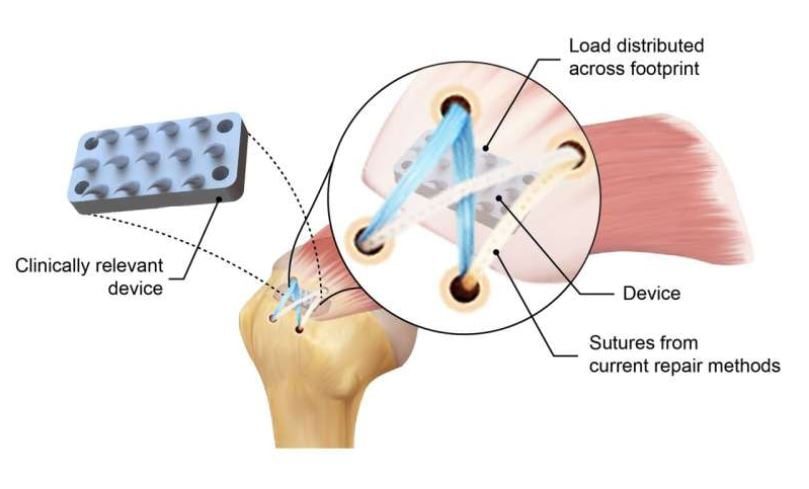The Rotator Cuff Conundrum: A Common Yet Challenging Injury
The rotator cuff, a complex network of muscles and tendons that stabilize the shoulder joint, is prone to injury, affecting millions of individuals annually. While surgical intervention offers a potential solution, the failure rates of rotator cuff repairs remain alarmingly high, ranging from 20% to a staggering 94%. The primary culprit behind these failures is the tearing of sutures through the delicate tendon tissue.
Nature’s Solution: The Python Fang Paradigm
In a bid to overcome this challenge, biomedical engineers have turned to an unlikely source of inspiration: the fangs of pythons. Unlike the razor-sharp teeth of sharks designed for cutting, python fangs are ingeniously curved inward, enabling them to maintain a secure grip on struggling prey. This unique design, honed by millions of years of evolution, has sparked a groundbreaking innovation in surgical technology.
Engineering a Biomimetic Solution
Researchers meticulously studied the geometry of python fangs, utilizing computer simulations and 3D printing to develop a device that replicates their biomechanical properties. The device comprises an array of small, pointed teeth that interlock with the tendon and bone, distributing the forces across a larger surface area and minimizing the risk of suture tearing.
Initial tests on cadavers have yielded promising results, with the python-inspired device demonstrating a twofold increase in holding strength compared to traditional suture repairs. This significant improvement could potentially translate into lower rates of retearing and improved outcomes for patients undergoing rotator cuff surgery.
From Cadavers to Clinic: The Path Forward
While the cadaver studies are encouraging, further research is necessary to validate the device’s efficacy and safety in living organisms. Future studies will assess the long-term performance and biocompatibility of the device, ensuring that it does not degrade or damage the surrounding tissues during the healing process.
Despite the need for further testing, the python-inspired device represents a significant leap forward in the field of rotator cuff surgery. Its innovative design, inspired by nature’s ingenuity, has the potential to transform the treatment landscape for this common and debilitating injury, offering renewed hope for millions of patients worldwide.
Key Learnings
| Key Point | Implication |
|---|---|
| A new surgical device inspired by python fangs shows promise for rotator cuff repair. | Could significantly reduce failure rates and improve outcomes for patients. |
| The device distributes forces across a larger surface area, minimizing suture tearing. | Offers a more secure and stable repair compared to traditional suture techniques. |
| Initial tests on cadavers demonstrate a twofold increase in holding strength. | Provides strong evidence for the device’s efficacy. |
| Further research is needed to validate the device’s long-term performance and safety. | Ensures the device’s suitability for clinical use. |
| The python-inspired device represents a paradigm shift in rotator cuff surgery. | Opens new avenues for innovation and improvement in the field of orthopedic surgery. |

Sunil Garnayak is an expert in Indian news with extensive knowledge of the nation’s political, social, and economic landscape and international relations. With years of experience in journalism, Sunil delivers in-depth analysis and accurate reporting that keeps readers informed about the latest developments in India. His commitment to factual accuracy and nuanced storytelling ensures that his articles provide valuable insights into the country’s most pressing issues.



